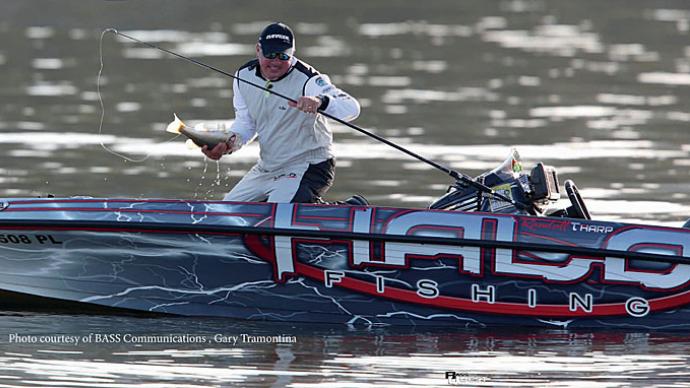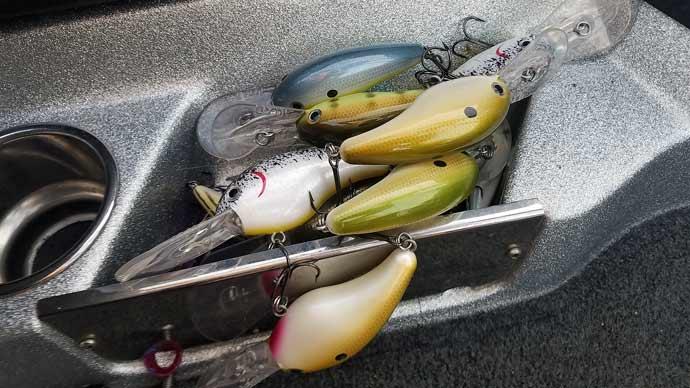
During the Springtime in early trips to the water, what is your go-to bait when looking for bass? Of course, some of you will say a jig, spinnerbait, or a vibrating jig. These are good choices, but I have another bait to add. My bait choice early in the season when looking for signs of bass is a crankbait. I can cover water from top to bottom with a crankbait, and I won't run out of options and ways to fish them.
Crankbaits are made in all shapes and sizes, and how successful you can be will depend on how well you stock your crankbait box. I stock and carry a variety of sizes and styles in my box to cover situations that I may come across during the early part of the season. A few crankbaits styles to consider stocking are square bills, flat side, and mid-depth cranks.
Let’s break down early-season crankbaits to help you choose and set up these baits to get the most out of them. We can call this the Nuts and Bolts of Springtime Crankbait fishing.
Square Bill Crankbaits
Square bills crankbaits are the four-wheel-drive crankbaits of the lineup. You can cast them into cover, and they will deflect and plow a path back to the boat. The more cover you can get these baits to come through or over without fouling, the more bass you'll trigger to bite during your day on the water. Stock a few different baits in your mix to cover the water depths you'll be fishing.
Another bait to pay attention to is sound. Yes, a good square bill will make a sound as it swims through the water, but some baits also have rattles. I carry both silent and sound in my box.
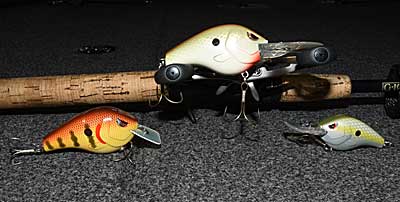
On days when you're fishing in clear water conditions, just a square bill retrieved through the water will get you bites, but when faced with fishing in stained or dirty water conditions, a bait with rattles will often attract more bites. Bass will use the sound to help them find the bait when sight is limited. Part of this may not be a water clarity issue. It may be that the bass are in the cover and will need a pre-warning that a bait is coming. Rattles will fill this bill and get the bass looking for the sound source.
Pay attention to various brands of baits, don't get locked into one brand when stocking your box. Even though the depth ranges may be the same, rattle sounds can vary. I have had conditions where the bass favored one brand over another. Both baits reached the same depth, but you could tell it was the rattles (sound) when it came down to triggering the bites.
Mid-Depth Crankbaits
To target bass in deeper water and cover locations before they move into the shallows looking for food and a spawning partner, square bills may not be able to reach the waters you'll need to reach. This crankbait range will be in the 5- to 10-foot range. Again, you'll need to stock silent and rattle baits in the box to cover your bases. It's essential to stock baits that can make contact with the weeds and be able to shed these weeds as needed.
I stock Crankbaits to target this depth range: SPRO Little John MD 50, RK Crawlers, and Fat Papa 55. These crankbaits can get to the target depth zone, and the body shapes are different. This combination of baits is both a mix of silent and rattles baits. By picking baits with different looks and fishing characteristics, you give the bass distinctive looks but stay in the target depth range. I will also add a few flat-side crankbaits to this mix. The bait that works the best is Berkley's Frittside crankbait.
Crankbait Keys
We have covered a few different keys that you need to pay attention to when picking and stocking crankbaits in your box. Another critical point is color. Stock your box with crankbait color that matches the forage that inhabits your waters. For example, what is the number one and two forage in your water? In the Midwest, bluegills are number one, and two would be crawfish. I will also carry distinct colors that can get noticed when faced with fishing in stained or dirty water conditions. Examples may be chartreuse, black back baits, or red baits. These baits stand out better than other baits in your collection. By carrying a full assortment of colors, you'll have covered what you need.
Line Choices
The line is another point that needs special attention, as you can use line to control better what your crankbait does and how it fishes. When fishing most of my square bills, I throw these baits on 12 pound Sunline Crank FC.
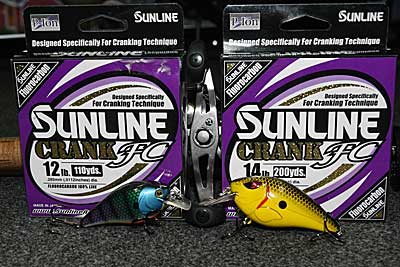
The characteristic of fluorocarbon line is that it will sink, allowing your bait to reach about a foot deeper than monofilament line of the same size. On the other hand, Mono has floating characteristics and acts as a depth limiter. So you can use this line to your benefit if you need better depth control to keep your baits above the cover making limited contact with the weeds.
Knowing line characteristics and using different line types helps you better control your bait and how it fishes to stay more productive.
Snap Or Not
Few fishermen use a snap when fishing crankbaits, but using a snap will give you benefits that you may not have realized. First up, changing your bait will be quicker than if you tie onto the bait's O-ring, but the biggest reason for this rigging is that the bait will have more freedom and action, thus creating more bites. Now try to monitor this as best you can as this will work two ways. If the bite is on, you'll generate more bites during your time on the water.
In the cases of fishing in severe cold front conditions, I will shy away from a snap to tone down the action of my crankbait a little. But, again, you'll have to pay special attention to the conditions you're fishing in and the reaction of the bass to your bait at that time of day. One of the best ways to tell is how the bass bit your bait, is he hooked inside or outside the mouth? If hooked inside, keep fishing that bait choice. If hooked outside of the mouth, adjust either color or action.
Stop & Go
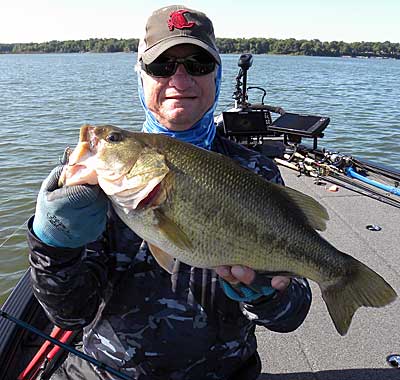
We have touched on the fact that the more you can make contact with the cover and keep your baits weed-free, the more bites you can trigger. Another tactic to enhance this is to give your bait a good rip like you're setting the hook and let it sit in place for a second or two after you pull the bait free from the cover before you start to reel. Taking a closer look, you can't do this with a jig, spinnerbait, or vibrating jig. If you made this move with these baits, they would fall to the bottom out of the strike zone. This free-falling bait may trigger bites as it falls but now make the same move with a crankbait. Reel your crankbait down, and when it hits the cover, give it a good rip and let the bait sit for a few seconds before you start it on its way again. The bait will quick dart forward and stop. It's this stopping action that can trigger reaction bites. Bass see forage dart away in front of them, but few times do they see their food stop before them, daring them to eat. I have had days that this was the only way I could trigger bites from following bass. Sometimes they would push the bait out of their way, but when I would use this rip and stop method, I was able to turn the pushes into strikes.
One last point, pay attention and make sure that you have good sharp hooks. Nothing quicker will lose bass on a crankbait than dull hooks. So take the time during your day on the water to check your hooks and make sure that they are sharp. If you can scrape that hook point across your fingernail and it doesn't grab, you need to take the time to sharpen your hook.
I hope these Springtime Crankbait Nuts and Bolts help you put more bass in your boat this coming Spring. Crankbait fishing, like other tactics, has some built-in characteristics that you can take advantage of to help you trigger more bites and get fish into your boat if you use them to your benefit.
BassResource may receive a portion of revenues if you make a purchase using a link above.



